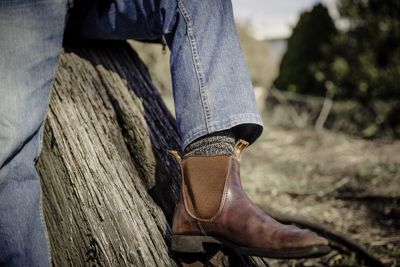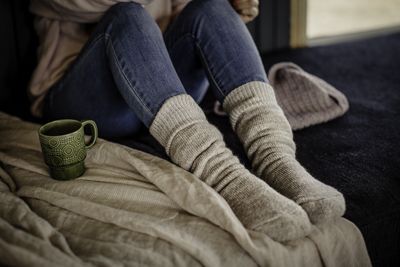5 Reasons Why Socks Wear Out
In this day and age, keeping manufacturing costs low to increase affordability, as well as maximizing company profits, has led to floods of mass produced, inferior quality throw-away products that very quickly wear out, break down or fall apart and end up in landfill. These cheaper products have to be replaced more frequently, keeping sales coming in for the companies supplying them, and costing the consumer more over time.
Cheap socks will certainly wear out more quickly, but even quality socks can have a shorter life-span when not properly cared for. Longevity in hosiery begins with good materials and construction, and continues with proper care.
You’ll find below 5 of the key reasons that socks wear out quickly, to help you choose the right socks and make them last longer. You can also check out a video on our YouTube Channel: https://youtu.be/C-lRaB9kpsY.
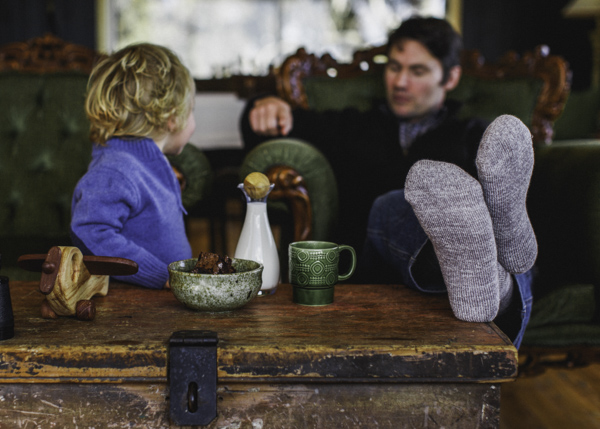 |
|
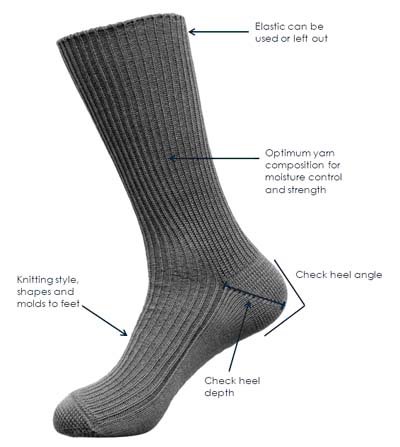 |
1. Heel angle and depth - Modern knitting has become very time-efficient, however following the angles of your feet and legs doesn’t seem to be high on the priority list in many cases. It takes extra time to get a machine to knit a well-shaped, deep heel, as close as possible to 90 degrees. Most people find that when they lay socks flat, the socks are quiet often nearly straight. The L shape from leg to foot is a rare thing, but when you start walking and your socks start to get eaten by your shoes, you realise the heel shape has a lot to answer for. The key to getting socks to last longer is to minimise movement. More movement means more friction, which has potential to cause blisters, and it also starts to pull fibres apart. A well-shaped heel is a major factor in minimizing movement, as it effectively anchors socks into place on your feet. |
|
2. Yarn quality and composition - Smelly feet, sweaty feet, itchy skin, pilling, worn out patches, holes, shrinkage, bagginess; all of these things (and then some more) can be attributed to the material used. Starting from the farm, the selection and processing of natural fibres has a huge impact on your feet and the longevity of your socks. Fibres that are not too fine, but that combine strength and comfort are the best for socks. We look for a fibre diameter that is strong enough to produce hard-wearing socks, yet soft enough that it doesn’t cause itchiness or discomfort. In processing wool, there are different techniques utilised to create different attributes for the yarn as required. Woollen spun yarn refers to the technique that allows pockets of air within the spun yarn to increase insulation. This has great applications for warm and snuggly jumpers, scarves and blankets, however it is more prone to pilling and felting, and it lacks the strength and durability required for long-lasting socks. Worsted yarn spinning ensures that all fibres are aligned parallel and a twist is applied to the fibres after they are brought together. This results in a smooth and strong yarn that is perfect for knitting high quality socks. For the skin, natural materials like merino or cotton are best kept pure but due to the heavy demands of wearing and washing socks, other fibres like nylon, polyester, elastane or silk are usually added as the yarn is spun or as the socks are knitted to support and strengthen them for better fit and durability. We have found that a proportion of 75% natural fibre to 25% nylon is the optimum balance between resilience and moisture control. We avoid elastane as too many socks become bags around your feet once the elastane looses its stretchiness. The micron or thickness of merino fibre itself, and the construction of the yarn, and whether it’s woollen yarn or worsted yarn, all impacts the final outcome. We are currently investigating a natural and sustainable nylon replacement so that we can move away from synthetics for more comfortable and eco-friendly socks. |
3. Knit style - Modern manufacturing has evolved to become faster and smarter, involving far less human input as machines take on more processes. Sock manufacturing is no exception. Modern computerised sock machines can knit with intricate designs, fully finished in half the time taken by old machines. Even though modern machines have evolved to do some amazing things we believe that the traditional rib knitting our machines achieve has an important role to play. We make a range of ribbed knit socks for a variety of show styles and conditions. The socks that our grandparents may have knitted by hand were usually ribbed, and it’s the older patterns and ribs that actually perform a great function of molding to the form of our feet. Add the deep heel angle and shape, and you have socks with a snug fit. Even knitted without elastic our Loose Top Socks don’t fall down because they hug your leg. A well-fitting sock means less movement and friction on the yarn fibres, fewer worn patches and holes, and a pair will last long enough to become old favourites.
|
|
4. Shoes not a good match, or wearing on rough floors. You can spend serious money on the best high-tech socks, but shoes and boots can be sock destroyers. Shoes will make months or years of difference in the life of a sock. Like a great marriage, the union of quality shoes, well-fitted and matched to the correct thickness of socks, is the key to getting wear after wear out of your socks. Added to that the common blister, rubbing and sore feet problem, it is worth getting this shoe/sock combination right. For help matching the right shoe with the right sock and assistance with sizing, see All About Sock Sizes. Like many, we love to wear socks around the house, especially in winter. Carpets and rough-textured tiles inside, or splintery decking and abrasive concrete when you quickly duck outside the house, can easily snag or wear holes in socks over time. A luxurious, soft merino will not last very long in this environment. That said, we’ve been known to treat our more durable Heritage ‘Max’ socks pretty roughly, and they’ve still served us well for many years. |
5. Over-washing. In our modern life, throwing clothes into the machine is just another task that takes up too much of our busy lives. With the over-use of synthetics, smelly feet and tinea become common and familiar problems, so it’s part of routine to get our socks into the wash after a few hours of wear. But get into wearing a high-end merino sock and things are a little different. Natural fibres like merino are expert at wicking away sweat and moisture. If the content of merino fibre is a truly high percentage, then socks of 60% content to 100% pure wool can actually be air-dried overnight for a number of wears without any smell or problems. Over-washing or using harsh detergents or softeners can quickly break down natural materials, so keep this in mind when caring for your socks. To help care for your socks and reduce the impact on the environment, we recommend a cold machine wash to a maximum of 30 degrees on a wool or woolens cycle setting. Faster cycles are better; some front loaders have long cycles and may even heat their own water, so beware it doesn’t get too hot. Natural, gentle soaps are best to preserve the life of natural fibres, especially silk (Luxury alpaca merino silk socks). We have been told by a few alpaca farmers that the best way to care for alpaca products is to hand wash them in shampoo. Air drying in the shade is best. Tumble dryers should be avoided. Direct, intense sunshine or drying close to heaters can shrink the wool. If you have accidentally shrunk your socks, try to stretch them out whilst they are wet. For more information about washing, drying and storing our socks, accessories and apparel, see Caring for Your Socks. |
And two bonus points for keen readers and sock enthusiasts:
|
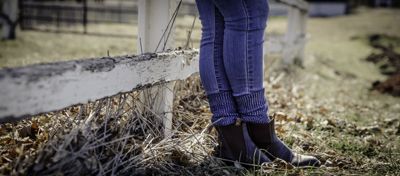 |
6. Sock Summary There's no one perfect blend or type of sock for everyone, but you know best what your preferences are and what activities your socks are for. We’re here to guide you in your search to find your perfect pair, and you’re always welcome to contact us if you have any questions we haven’t answered in All About Sock Sizes or our FAQs. One thing we do know is that our products last. If we can make all socks last even longer by sharing this info then we can deliver customers value for money, and we’ll have far less textile waste on the planet. Our aim is to make socks so comfortable they’re worth darning! Our Sock Collections include:
|
|

